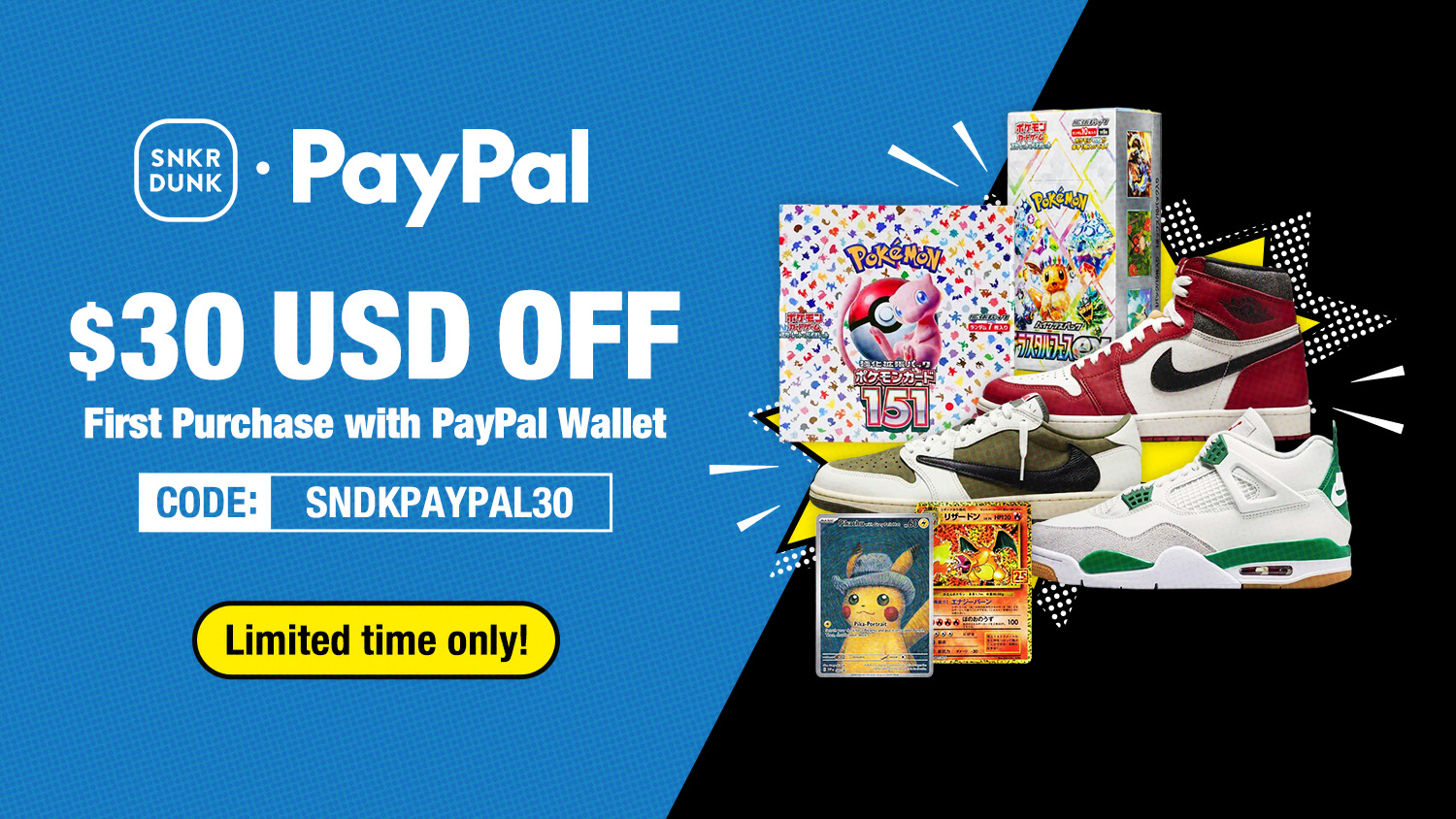How to Determine if a Pokémon TCG Card Is Counterfeit
Everything you've ever wanted to know about Pokémon TCG card authentication.
Many unscrupulous vendors have attempted to pass off counterfeit Pokémon TCG products as the real thing and have caught many unsuspecting buyers off-guard. As such, it’s always helpful to be aware of the characteristics that set apart a phony from a genuine Pokémon TCG card.
To tell apart a fake Pokémon TCG card from a real one, five criteria can be assessed. We’ll also discuss points related to the authenticity of the card slab it comes in (if graded) as well as how the process of the card sale might inform a buyer of the card’s potential authenticity or lack thereof.
We’ll first look at the characteristics that separate a real Pokémon TCG card from a counterfeit. We have actually written about this topic before; however, what we did not do in that topic was use examples of actual cards to provide a better visual representation of what the flaws of a fake card look like.
The cards which will serve as our “case studies” here are Giovanni’s Exile (Double Blaze [SM10] 105/095), Meowth (SV-P Promotional Cards 192/SV-P), and Lillie’s Clefairy ex (Battle Partners [SV9] 126/100).
Card Exterior

A genuine Pokémon TCG card has a very specific texture with a smooth, glossy finish when held to the light. A fake, on the other hand, might be unusually thick or thin when compared to the actual thing; it may also be rough and grainy to the touch.
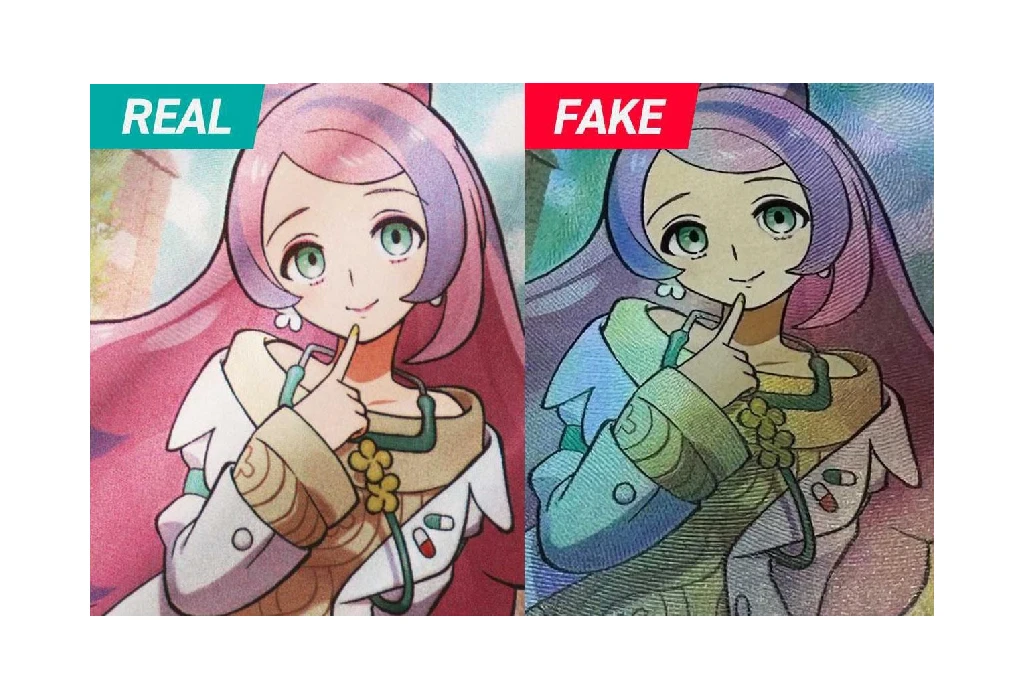
It’s also possible for a fake card’s imagery to have the incorrect color or shading due to the use of different inks. The fake versions of our test cards exhibit these errors as such:
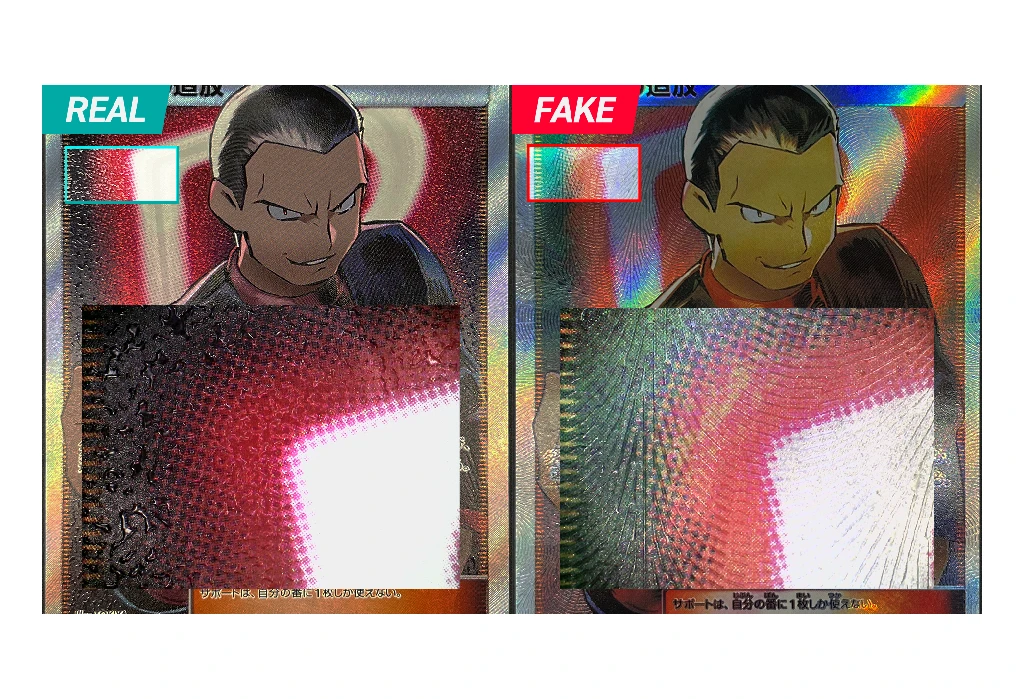
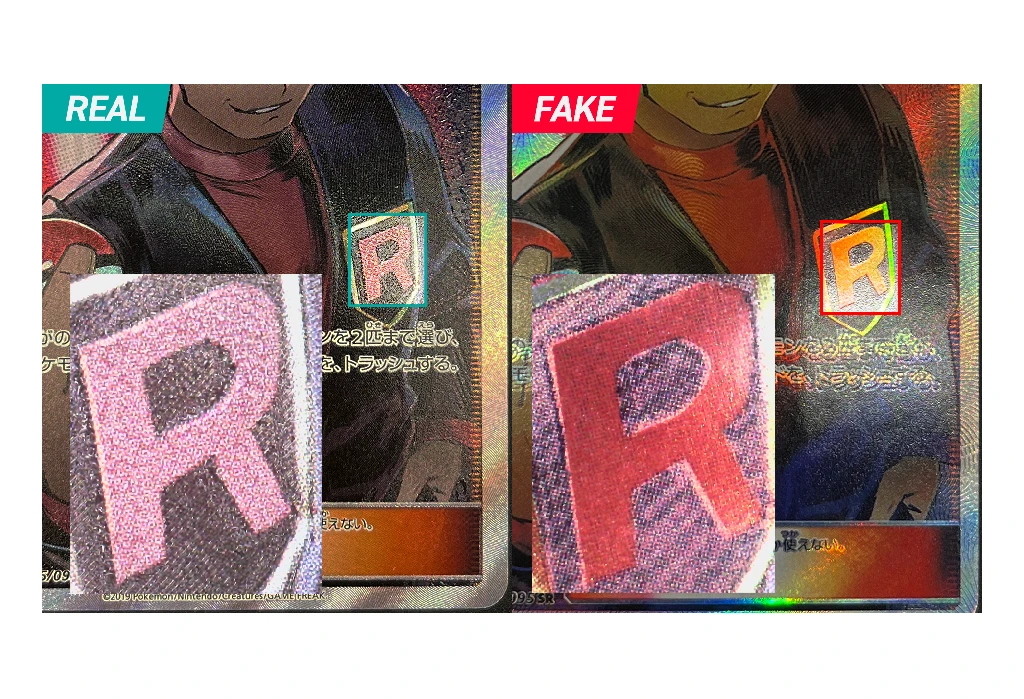
Giovanni’s Exile: Top-left corner of the background “R”, the Team Rocket logo on Giovanni’s coat
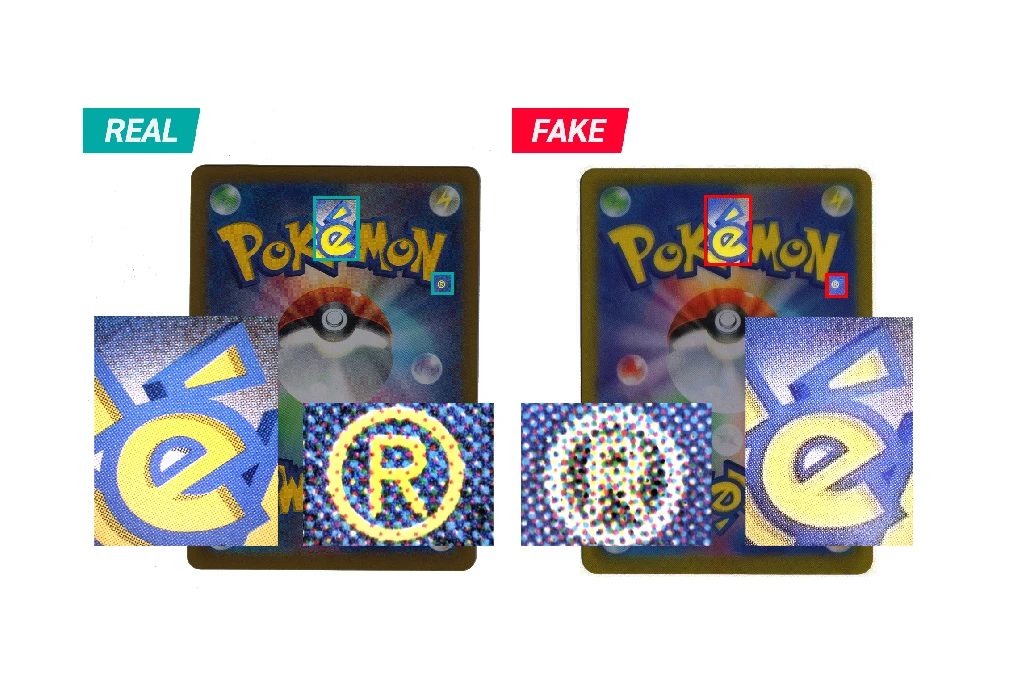
Lillie’s Clefairy ex: Pokémon logo on the back of the card, the ® symbol beside it
Text
Perhaps the most obvious tell that a card is fake is an error in the text of the card such as grammar or spelling or the use of the wrong name. Text can also reveal that a card is fake if a certain portion of the card’s text doesn’t use the correct font, is misaligned, or has too little or too much shading.
The following textual errors can be seen in the fake versions of our cards:
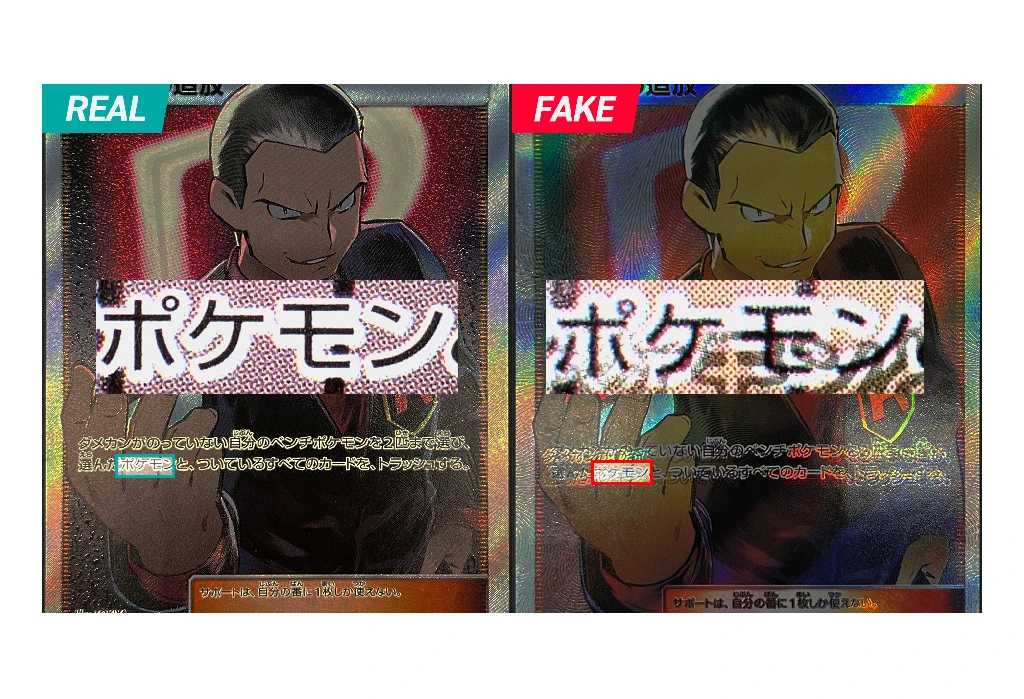
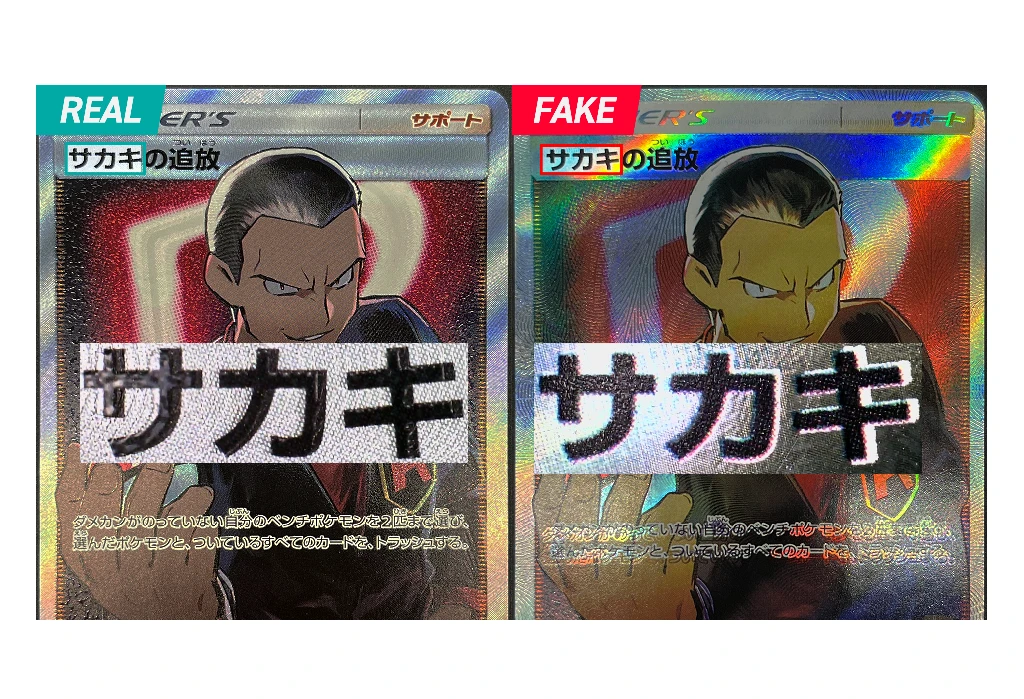
Giovanni’s Exile: Blurred font in the text of the card’s effect, 3D effect in the font of the card’s name
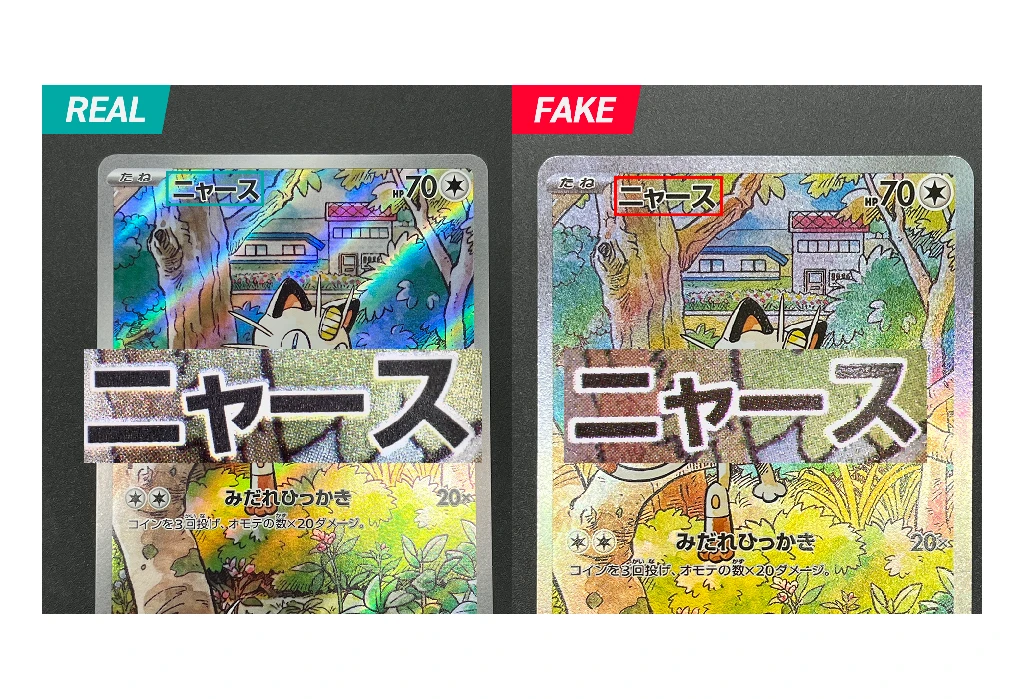
Meowth: Blurred font in the card’s name
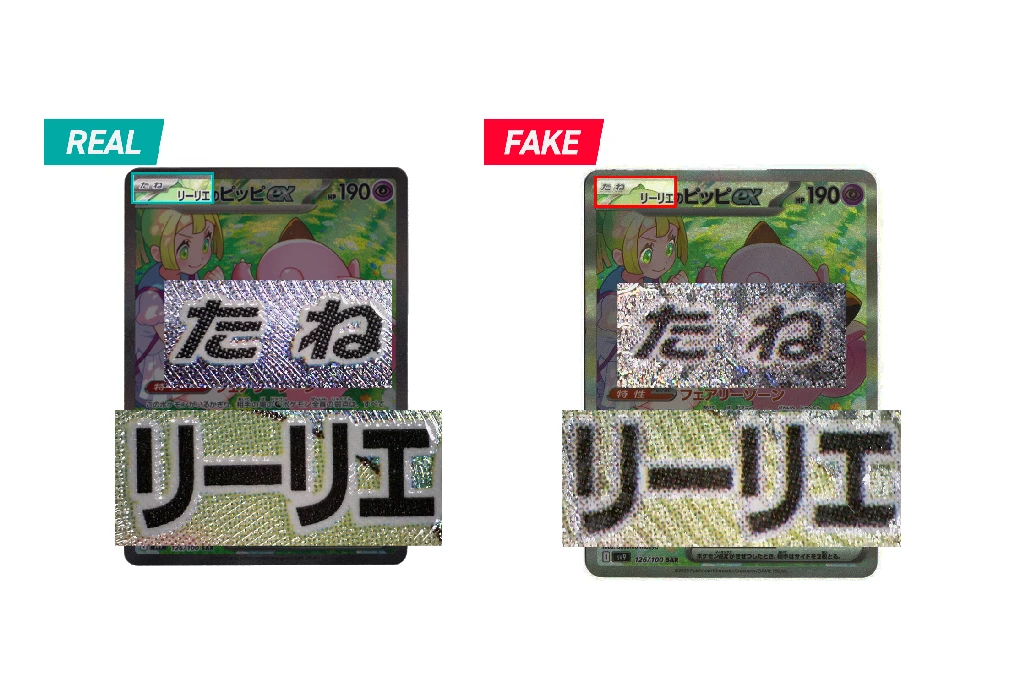
Lillie’s Clefairy ex: Card name text is unvarnished, ink dots in the text of the card’s name
Print Resolution/Quality
Most fake cards tend to have reduced print resolution and/or quality. This is usually seen in the form of faded or unclear colors. Card illustrations might also be printed unevenly.
In the cases of more minor print resolution and quality issues, the use of a microscope will be needed as they are not visible with the naked eye. For that reason, SNKRDUNK’s experts include microscope testing as part of the card authentication process.
None of our three cards’ fake versions are marked by print resolution and/or quality issues. As such, here is a sample of what such would look like:
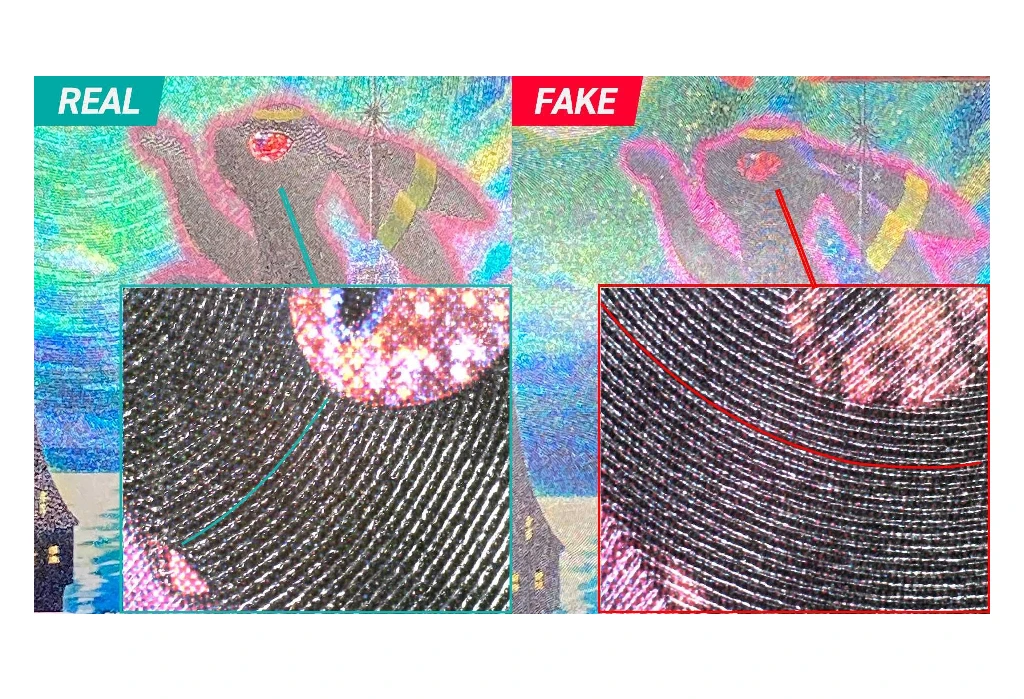
Card Dimensions
A Pokémon TCG card should have the following dimensions: a length of ~6.3cm (~2.5in), a width of ~8.8cm (~3.5in), and a thickness of ~0.3mm (~0.01in).
Going back to our three cards, the following are the issues found with regard to dimensions of the fake versions:
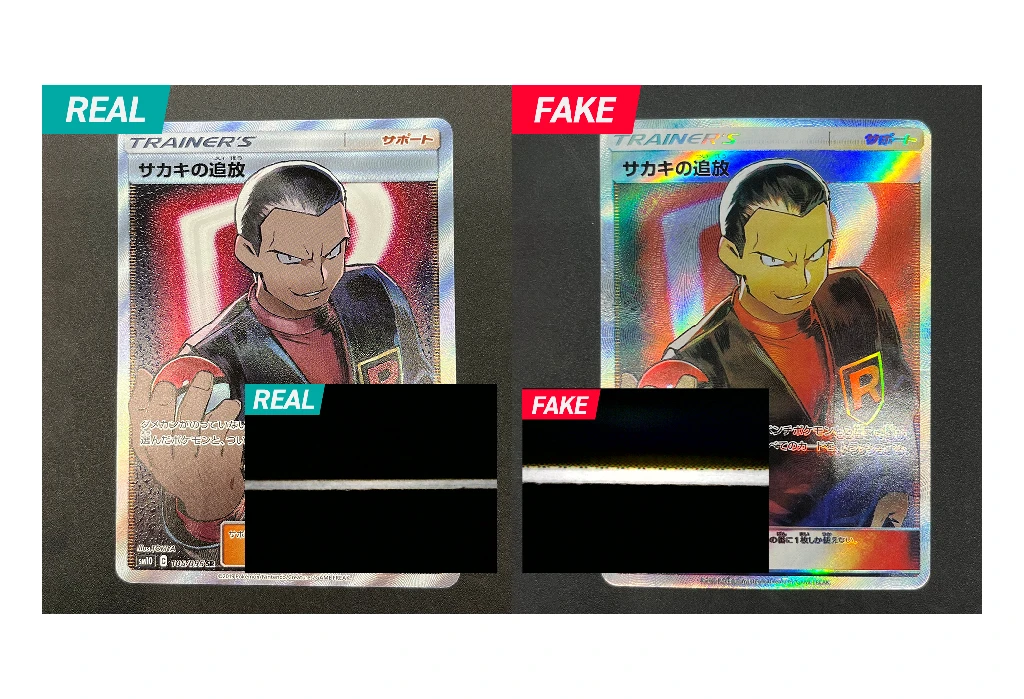
Giovanni’s Exile: Thickness of ~0.455mm (~0.02in)
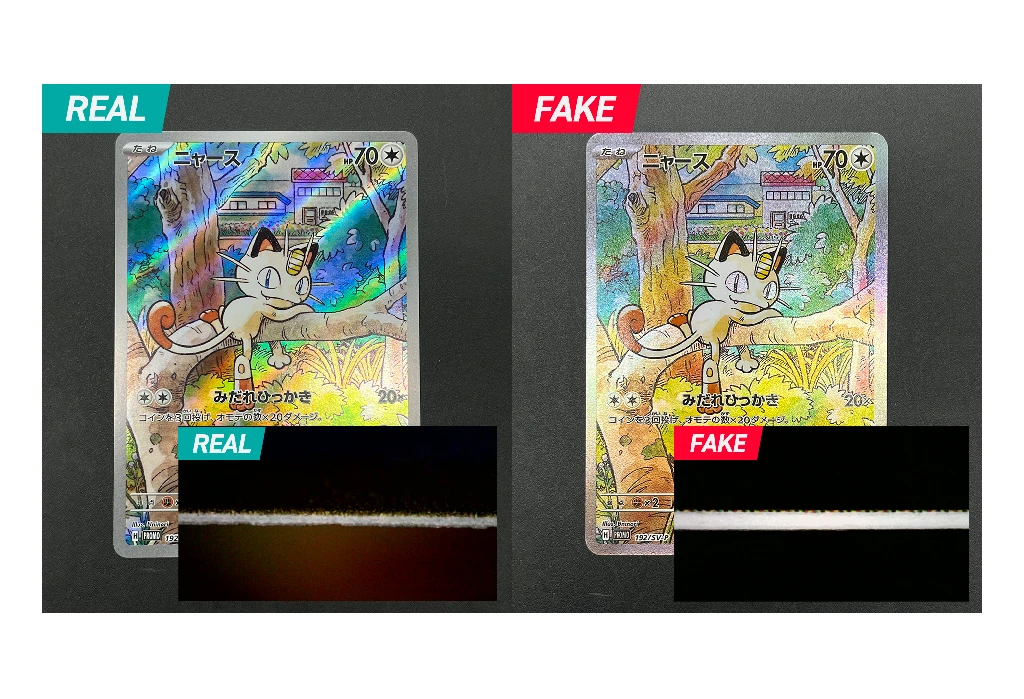
Meowth: Thickness of ~0.455mm (~0.02in)
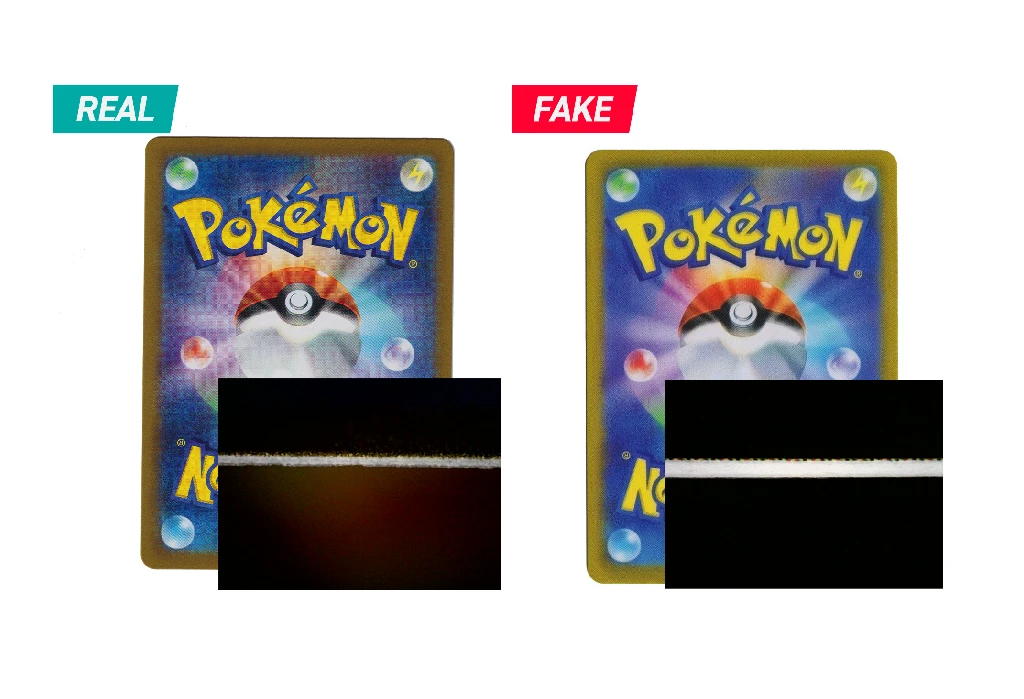
Lillie’s Clefairy ex: Thickness of ~0.455mm (~0.02in)
Processing
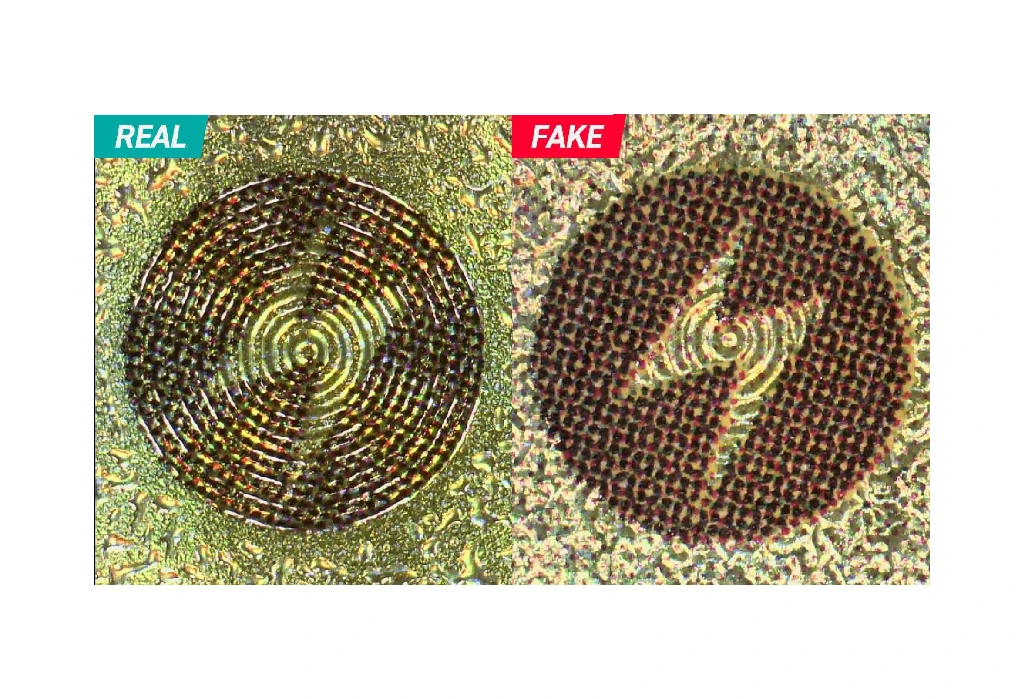
Processing errors are by far the most common errors seen on counterfeit Pokémon TCG cards. These processing errors primarily impact the holofoil or relief patterns found on the fake cards.
Fake holofoil processing can be detected by the naked eye; similarly, fake relief patterns can be detected by touch alone.
In our sample cards’ fake versions, these are the processing errors they contain:
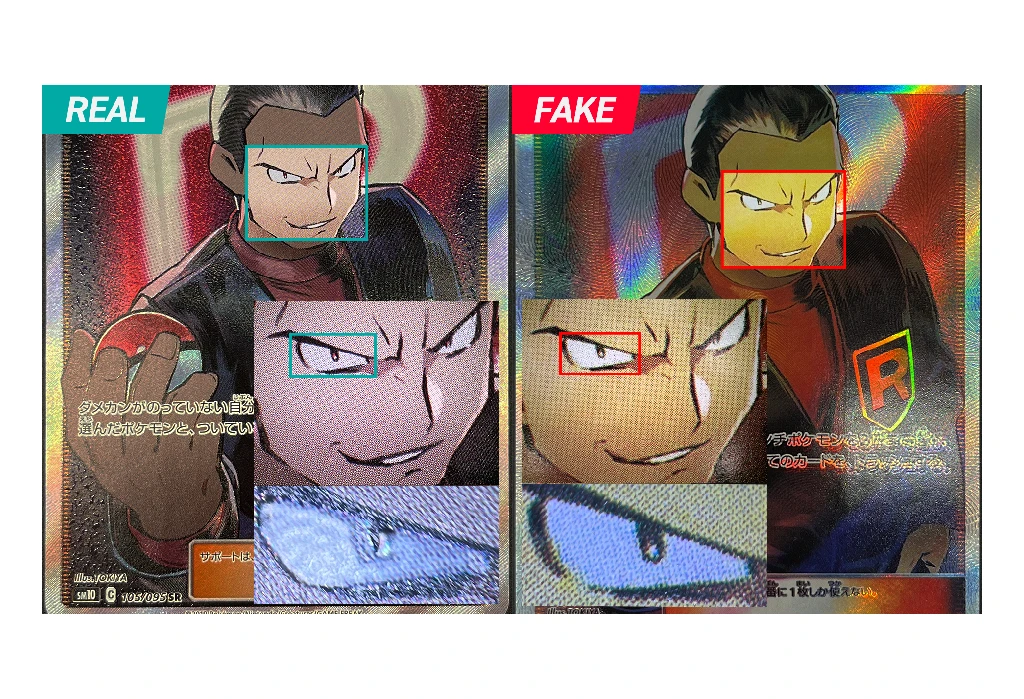
Giovanni’s Exile: Improper holofoil processing causes Giovanni’s skin tone to appear yellowish and the holofoil over Giovanni’s eyes to be unable to reflect light due to lack of varnish
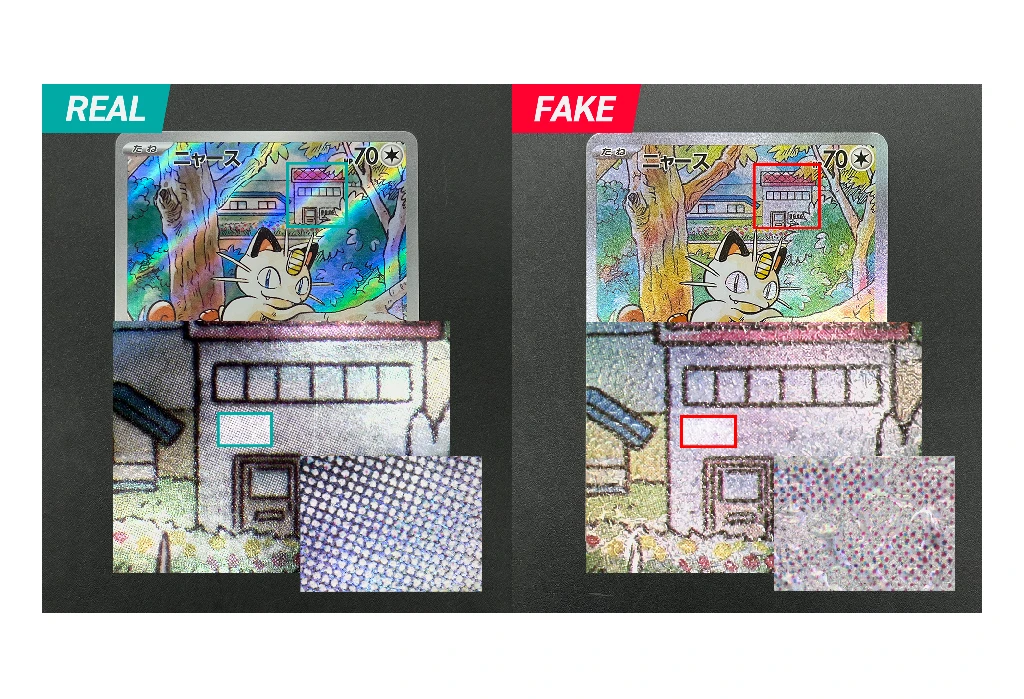
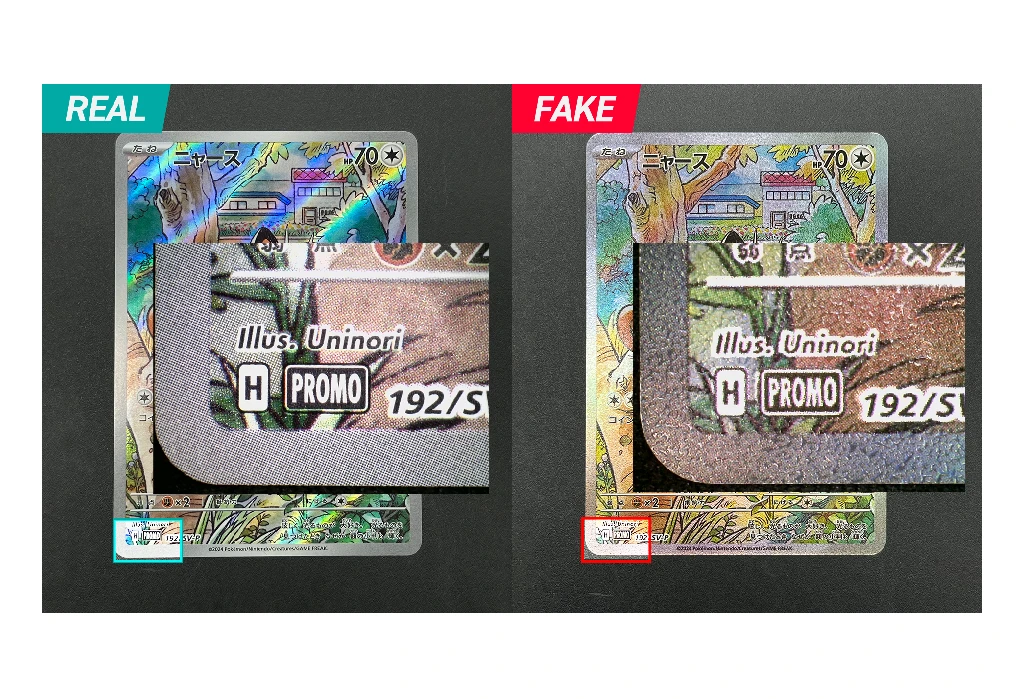
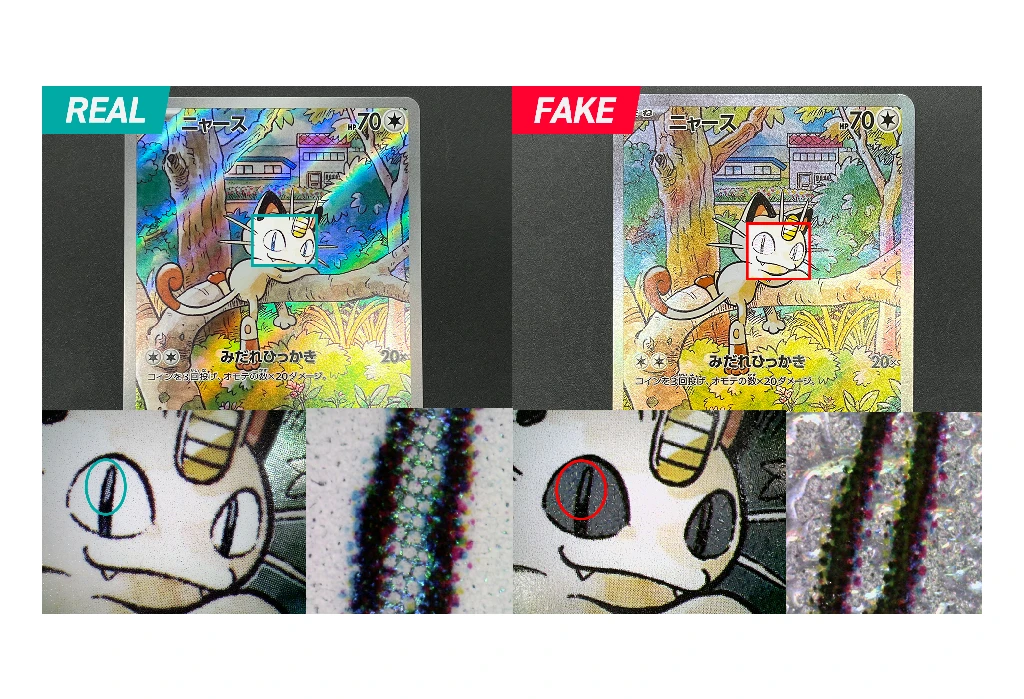
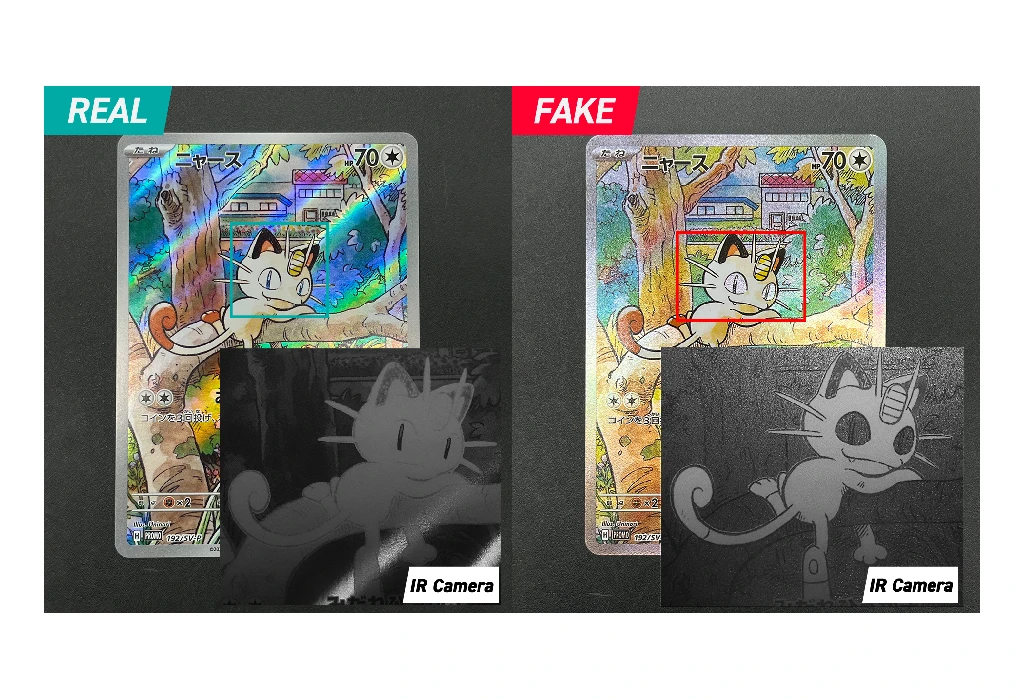
Meowth: Uneven and rough background holofoil processing, excess holofoil covering the edges of the card, no holofoil processing over Meowth’s eyes
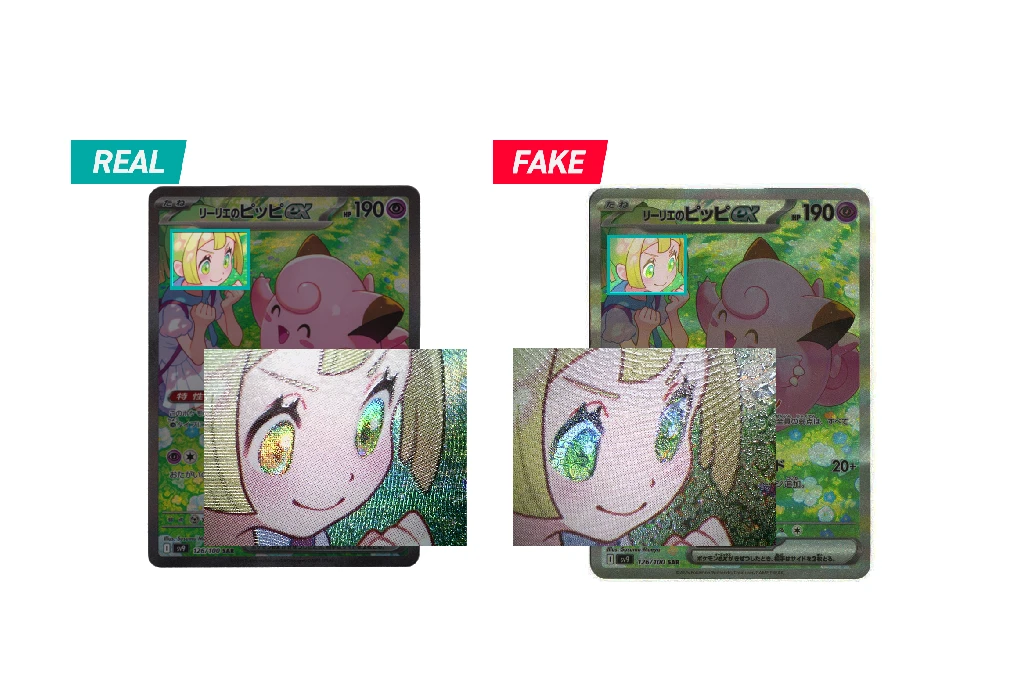
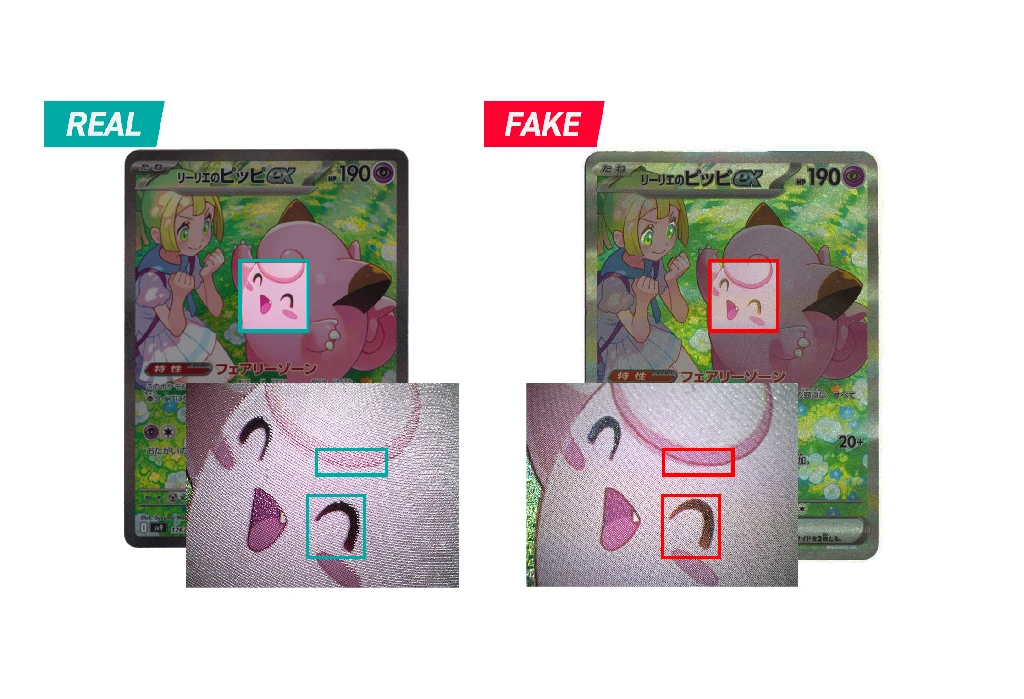
Lillie’s Clefairy ex: Embossed 3D finish causing the holofoil layer to be uneven; in addition, only Lillie’s eyes have a holofoil finish while the rest of her face doesn’t
Counterfeit Card Slabs
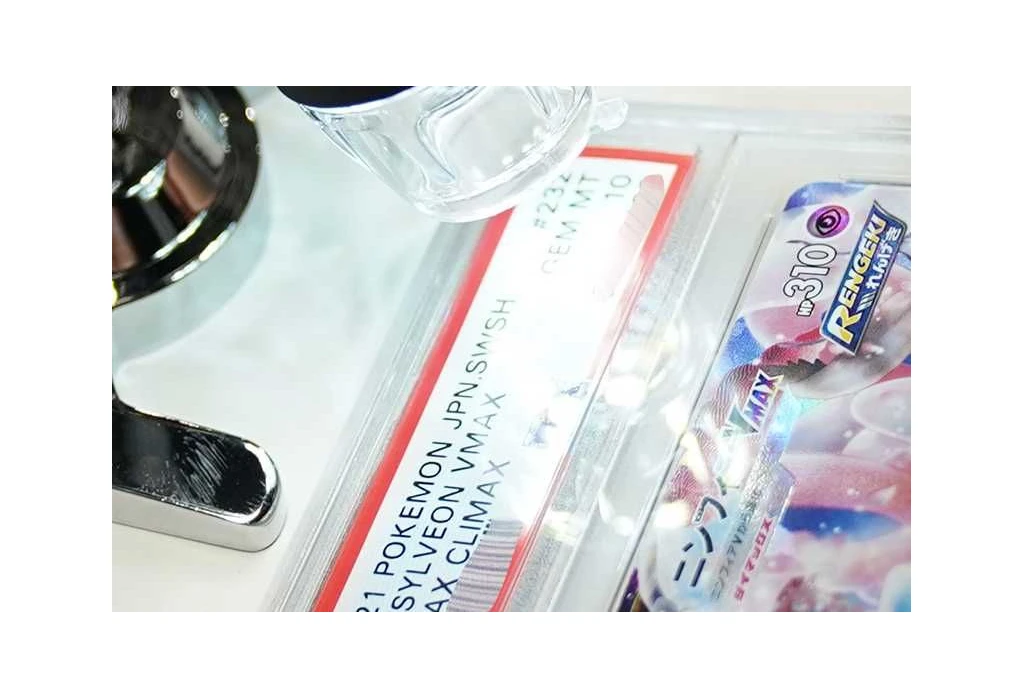
Even if the card itself is genuine, its value might be compromised if it comes in a phony card slab. Those selling cards in such fake slabs intend to make a dishonest profit by luring buyers into purchasing what appears to be a card with an impressive grade – only for the buyers to discover that the card in question has been placed in a fake slab and thus likely isn’t up to the grade it claims to be.
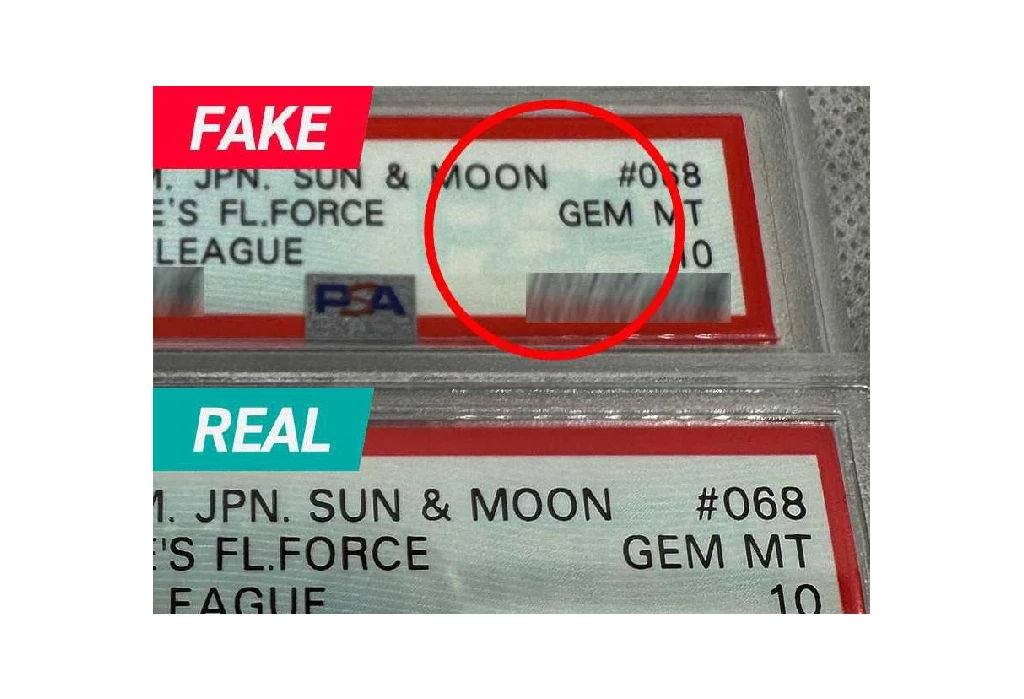
It’s possible to verify the slab’s authenticity by searching for its grading identification number on the website of the grading service provider. If the card that turns up is either non-existent or different, the slab is a fake one.
Other card slab issues indicating that the slab might be fake include cracks or other damage, unusual weight or size, or a counterfeit logo of the grading service provider in question.
The Sale Process
Even the process of the card sale may be an indicator of whether the card in question is indeed the real deal. The following might serve as red flags hinting that the seller isn’t legit:
Ratings – It’s not only helpful to be wary of sellers with many low ratings or very few ratings, but also sellers with an unusually large number of perfect ratings, as that may indicate the use of bots for rating inflation. Ideally, the seller in question should have many ratings with a high average rating—but not too high. A read-through of the comments should clarify the likelihood of the use of bots.
Card price – If the card in question is being sold at a price way below the usual market price, that’s a reason to raise an eyebrow. In almost all cases, genuine cards are sold at prices close to market prices.
Seller Responsiveness – An unresponsive seller might indicate that the card isn’t genuine—or even worse, doesn’t even exist as the online store itself is run by a “ghost vendor” and a front for a scam.
Why Choose SNKRDUNK for Genuine Pokémon TCG Cards?
To ensure you’re getting a legitimate card, consider buying from SNKRDUNK. We take many steps to ensure the authenticity of every Pokémon TCG product sold via our app.
For example, our experts make use of the latest technology to determine the authenticity of every single one of the cards we sell. We’ve also meticulously crafted a system that ensures that no products sold will be tampered with, ensuring that buyers always receive exactly what has been purchased through our online store.
Should any specific card be found to be fake before the card is sent to the prospective buyer, we’ll cancel the transaction. Buyers may also contact our office if the product received differs from what was actually purchased or if there are any other discrepancies or issues.
As such, you can be certain that whenever purchasing any Pokémon TCG cards from SNKRDUNK, the cards will undoubtedly be the real thing.
What is SNKRDUNK Lab?
As a leader in the industry, our lab is dedicated to tackling the social and economic problems caused by counterfeit goods. We aim to improve authentication technology and raise awareness about fakes by strengthening our partnerships with domestic and international experts and research institutions.
By combining technology, data, and human expertise, we are creating the future standard for what is authentic.
Our Main Activities
Investigating and Researching Counterfeit Goods
SNKRDUNK currently maintains an authentication accuracy rate of 99.97%. We will continue to conduct research and investigations, utilizing Japan’s largest database of counterfeit products to stay ahead of the curve.
Improving Our Authentication Technology
By introducing and researching various tools, including X-ray, infrared, and microscopes, we are enhancing our technology to ensure we can authenticate every single item.
Communicating for Public Awareness
We will regularly publish market reports based on our partnerships with external organizations and experts, as well as on insights and research findings gathered from the field.
Follow us on:
More SNKRDUNK Features:
7 Mega Brave [M1L] / Mega Symphonia [M1S] Cards to Buy at Below Average Market Price on the SNKRDUNK App
Best Clefairy Pokémon Cards by Generation
7 Best Kyurem Pokémon Cards Ever Released
The Fandom’s Faves: The Top 10 Most Popular Pokémon and Their Standout Cards
The (Starfall) Streets Won’t Forget These Underrated Pokémon TCG Cards














![Glory of Team Rocket [SV10] Card List: Revealed Cards & Expected Secret Rares](https://snkrdunk.s3.ap-northeast-1.amazonaws.com/en/magazine/wp-content/uploads/2025/04/15175415/Feature-Product-Image-4-2-150x150.webp)
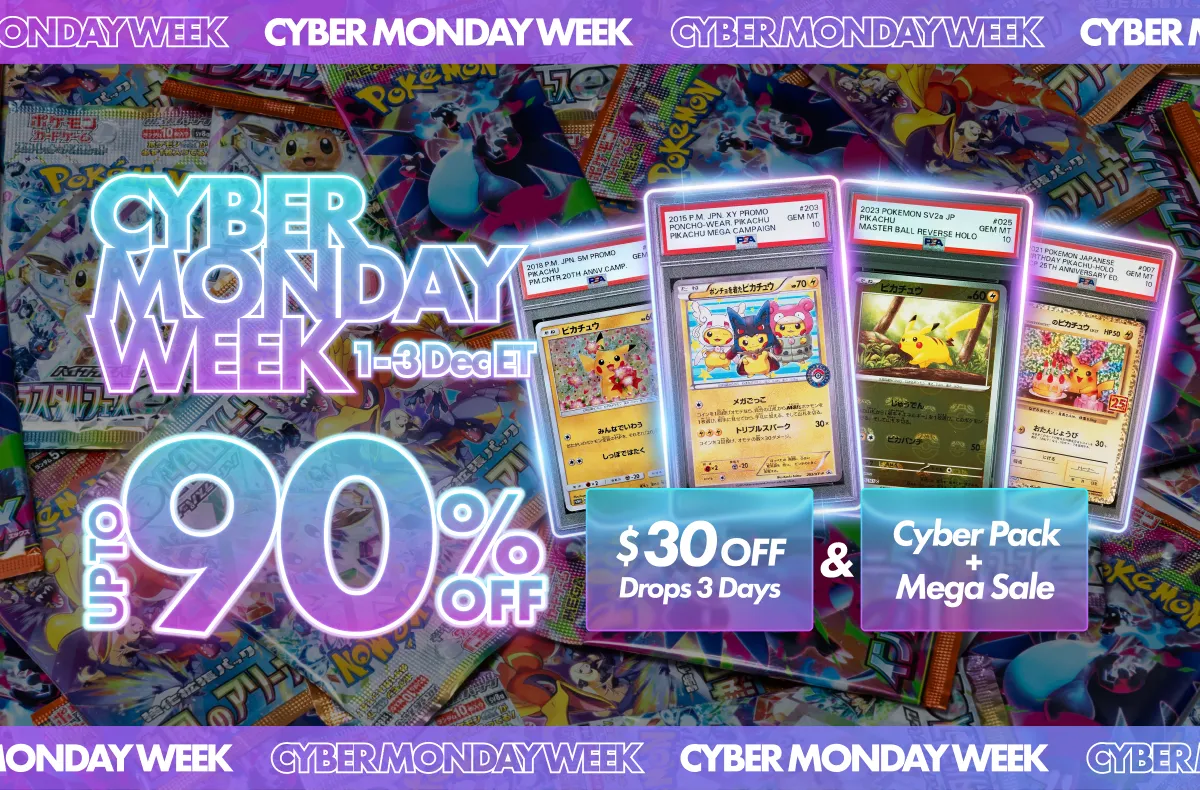
![atmos × Salomon XT-4 OG GTX “Stars Collide” [Release Date/Price/Where To Buy]](https://snkrdunk.s3.ap-northeast-1.amazonaws.com/en/magazine/wp-content/uploads/2025/11/27173659/20251126034518-0.jpg)
![Supreme x Dr. Martens Fall/Winter 2025 Week 14 [27th November 2025 / Price Varies / Supreme]](https://snkrdunk.s3.ap-northeast-1.amazonaws.com/en/magazine/wp-content/uploads/2025/11/26170843/20251125113727-0.jpg)
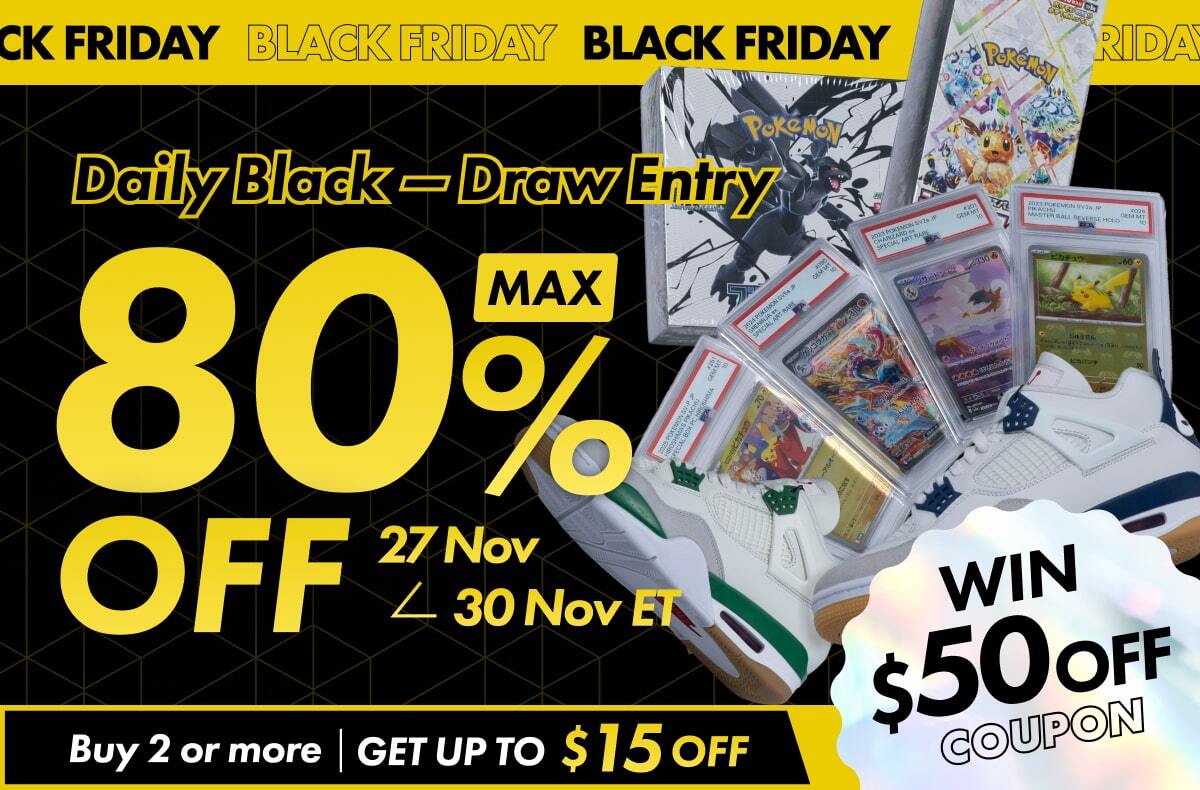
![New Balance 1906 LCS Loafer “Red Croc” [Release Date/Price/Where To Buy]](https://snkrdunk.s3.ap-northeast-1.amazonaws.com/en/magazine/wp-content/uploads/2025/11/21155320/20251104074640-2.jpg)
